Introduction: In this article, Jane Hampton Cook writes about Mother Frances Xavier Cabrini, first U.S. citizen canonized by the Roman Catholic Church. Jane is a presidential historian and author of My Country ’Tis of Thee for children. Her works can be found at Janecook.com. She is also the host of Red, White, Blue and You
I recently previewed the new movie, Cabrini, at the National Religious Broadcasters conference in Nashville, Tennessee. Released in March for Women’s History Month, this feature film focuses on the hardships that Mother Cabrini (1850-1917) [born Maria Francesca Cabrini] endured to establish her first orphanage and hospital for Italian Americans in New York in 1889.
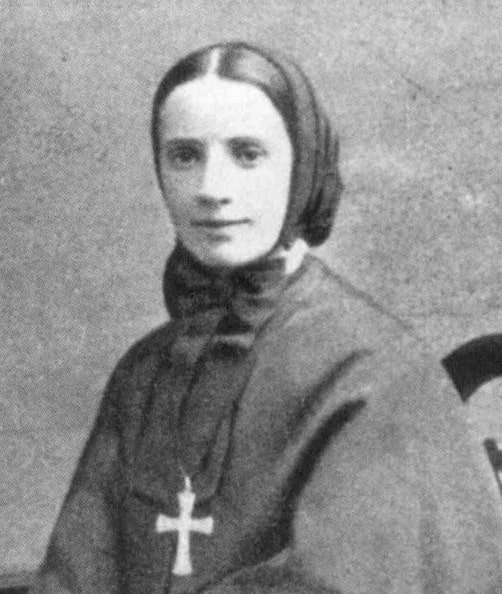
Before the movie, I did not know anything about Mother Cabrini. Because GenealogyBank’s Historical Newspaper Archives have proved valuable to me over the years in researching historical subjects, I turned to them to learn more about this remarkable woman.
A 1904 article in the Times-Picayune provided background on how she began her ministry.
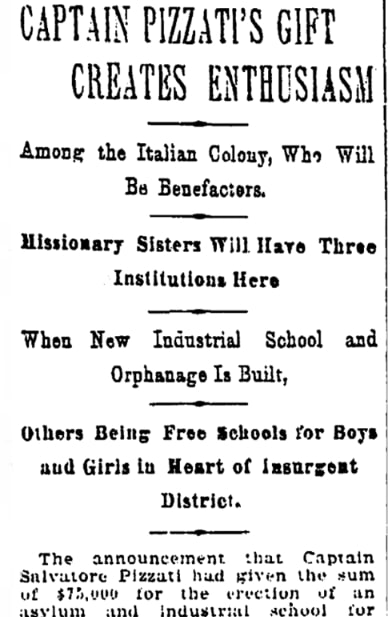
This article reports:
Mother Cabrini founded the Order of the Missionary Sisters of the Sacred Heart near Milan in 1880. The idea was to do missionary work among the Italians. The Order spread rapidly throughout Europe and South America. [Pope] Leo XIII, who was a warm personal friend of Mother Cabrini, approved the Order in 1888, and in every way protected and helped it. When Mother Cabrini spoke to Leo XIII of having the Sisters enter foreign work, he immediately said, “Go to America; go to the United States.” She at once made a visit, and seeing the condition of the Italian immigrant children in this country, she at once went to work to organize free schools, asylums, hospitals, etc.
The idea is to ever lift up higher and higher through charity and love. The Sisters now have hospitals and asylums and free schools in New York, New Jersey, and Philadelphia; free schools and asylums in Illinois, Colorado, Washington State and New Orleans. Everywhere the work has prospered, everywhere God’s blessing seems to rest upon it.
Cabrini and her Sisters moved to New York in March 1889. The News-Tribune published a detailed article on 30 June 1889 about the harsh and heart-breaking conditions Italian Americans faced in New York, especially orphans.
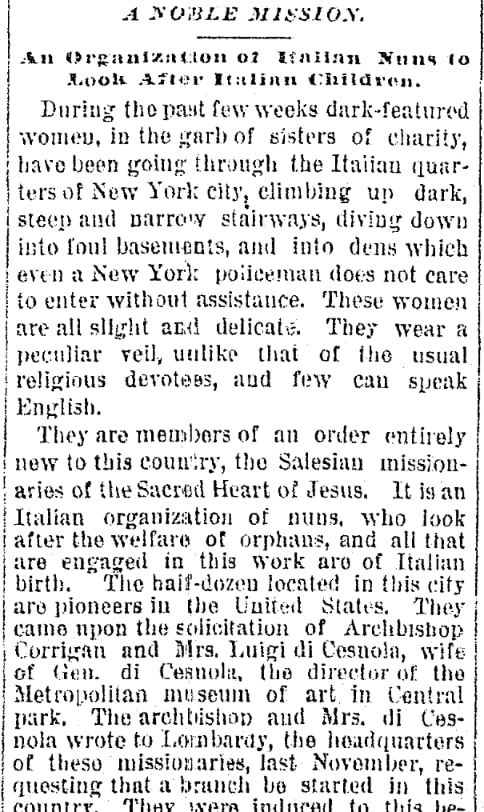
This article reports:
During the past few weeks dark-featured women, in the garb of sisters of charity, have been going through the Italian quarters of New York City, climbing up dark, steep and narrow stairways, diving down into foul basements, and into dens which even in a New York policeman does not care to enter without assistance. These women are all slight and delicate. They wear a peculiar veil, unlike that of the usual religious devotees, and few can speak English.
They are members of an order entirely new to this country, the Salesian Missionaries of the Sacred Heart of Jesus. It is an Italian organization of nuns who look after the welfare of orphans, and all that are engaged in this work are of Italian birth.
The movie Cabrini shows what these nuns encountered doing their charitable work. Many poor Italian children lived in squalor and extreme poverty in New York City. Hungry boys often begged or stole food. “The misery of the little Italians who are homeless and forsaken may not be so apparent, but it is even greater [than those who have homes],” the article reports.
The article describes Mother Cabrini:
She is a dark-hued but sympathetic woman, with large coal-black eyes and a winning smile. She cannot talk English and converses with all American visitors through an interpreter.
“Our object,” Mother Cabrini said, “Is to rescue the Italian orphans of the city from the misery and dangers that threaten them and to make good men and women of them. At present we are especially anxious about the Italian girls who have no decent homes but later on we shall look out for the boys also.”
She explained that not only did they seek to care for orphans but also for children whose parents could not financially care for them.
“We have found that many children are abandoned shortly after they reach this city. Their parents, who have come here expecting to be rich immediately, now learn their mistake and being unprovided with money, they set the children adrift to care for themselves.
“We take children between the ages of 4 and 15 years, house, feed and clothe them, and train them mentally and physically, so that they may be good citizens and good members of the church. Our mode of work is to go right down into the Italian quarters and go from house to house, from apartment to apartment. We are recognized by all Italians, and many of them are glad to see us,” Cabrini said, noting that a big city preyed upon abandoned girls.
Cabrini’s ministry needed funding. “As soon as our means will afford, we intend to have a larger house where we can accommodate all the children that come to us.”

Ten years later, Pope Leo XIII rewarded a major supporter of Mother Cabrini’s work: the Countess di Cesnola, who was the wife of the director of the Metropolitan Museum of Art. Countess di Cesnola had given money to Cabrini’s orphanages and hospitals. The highest award a Roman Catholic could receive, the decoration was an exquisite cameo of the pontiff engraved in white relief.
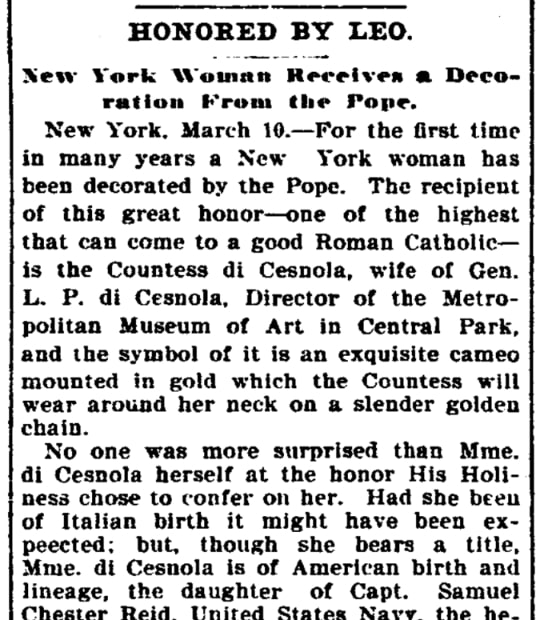
This article reports:
The decoration was presented to Mme. di Cesnola a few days ago by Mme Cabrini, Mother Superior of the Salesian Order in this city, to which Mme. di Cesnola has given her time and attention for years. Mme. Cabrini received it from the hands of His Holiness himself, and was charged to deliver it only into the hands of her for whom it was intended. This was done, and yesterday Mme. di Cesnola wore her new decoration for the first time.
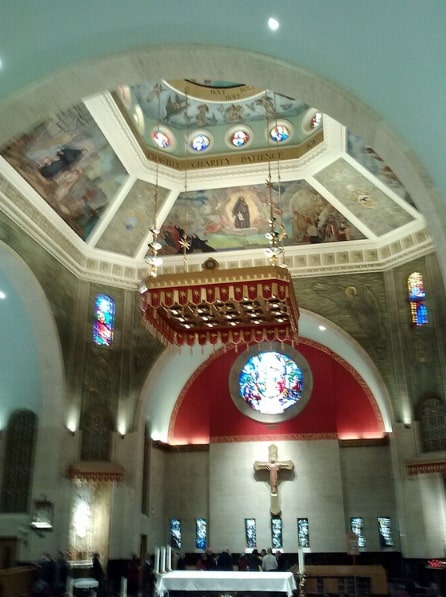
Decades later, in July 1946, the headlines in Chicago and around the world announced the sainthood of Blessed Mother Frances Xavier Cabrini of Chicago, where she died in 1917.

This article reports:
The bells of Rome’s churches rang out today proclaiming the sainthood of the Blessed Mother Frances Xavier Cabrini of Chicago, and Pope Pius XII saw in her life an admonition to the world against “stormy rivalry.”
“Men need as never before the splendor and fruit of saintliness,” the Pope declared.
“Nations and peoples will learn from her – who ardently loved her fatherland and spread the treasures of her charity and her labors even to other lands – that they are called to constitute a single family that must not be divided in ambiguous and stormy rivalry, nor dissolve itself in eternal hostilities.”
Mother Cabrini was the first American to become a saint in the Roman Catholic Church. The movie Cabrini is well worth watching. It is so well made, it deserves Oscars in 2025 for cinematography, acting, and directing. Thanks to GenealogyBank’s Historical Newspaper Archives, viewers can discover the details of her story.
Explore over 330 years of newspapers and historical records in GenealogyBank. Discover your family story! Start a 7-Day Free Trial
Note on the header image: Cabrini Shrine in Manhattan. Credit: Jim.henderson; Wikimedia Commons.

There’s a shrine to Mother Cabrini on a hill top just outside of Denver, along I-70 as you enter the foothills of the Rocky Mountains. It’s worth a quick stop if you happen to be driving in the areas.
https://mothercabrinishrine.org/
Thanks for the tip, Joel, and for taking the time to write us.